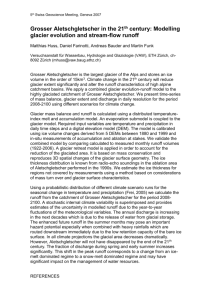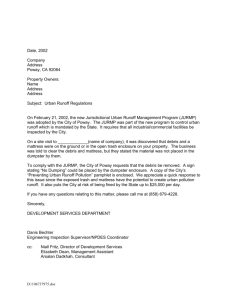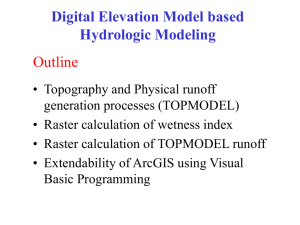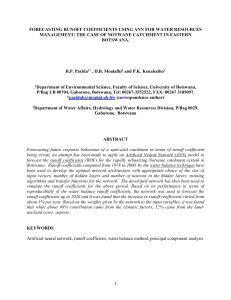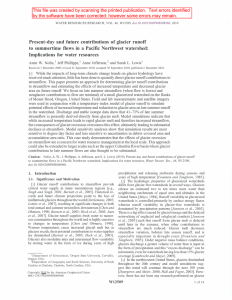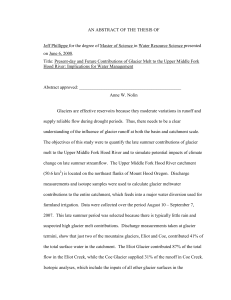Abstract Title - SWISS GEOSCIENCE MEETINGs
advertisement
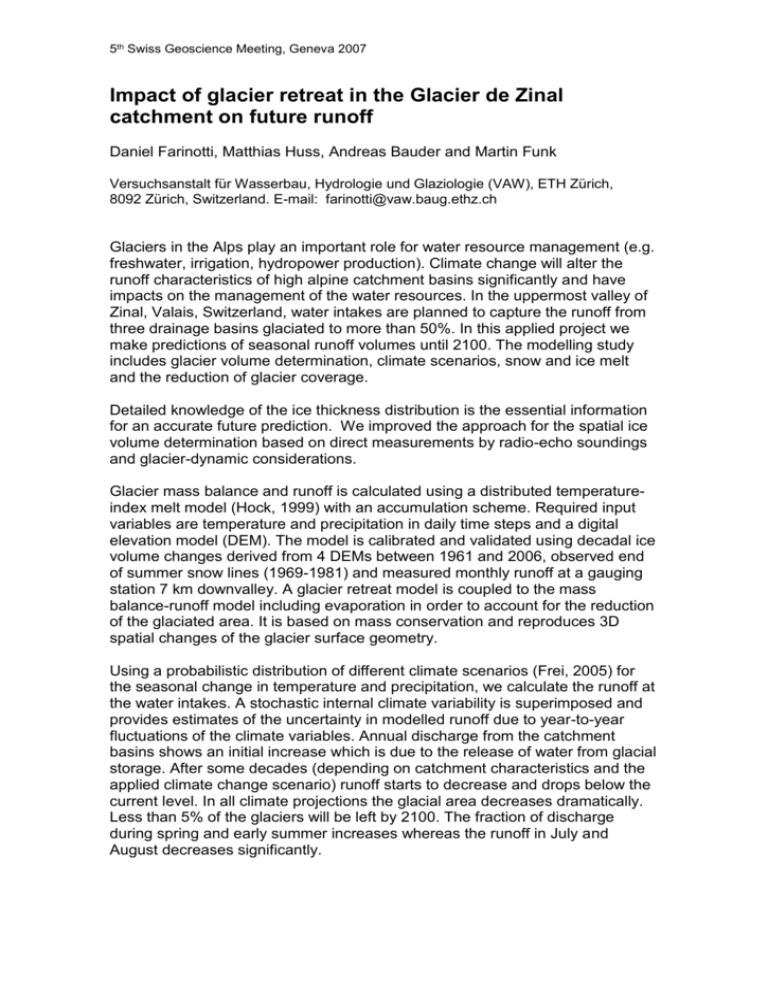
5th Swiss Geoscience Meeting, Geneva 2007 Impact of glacier retreat in the Glacier de Zinal catchment on future runoff Daniel Farinotti, Matthias Huss, Andreas Bauder and Martin Funk Versuchsanstalt für Wasserbau, Hydrologie und Glaziologie (VAW), ETH Zürich, 8092 Zürich, Switzerland. E-mail: farinotti@vaw.baug.ethz.ch Glaciers in the Alps play an important role for water resource management (e.g. freshwater, irrigation, hydropower production). Climate change will alter the runoff characteristics of high alpine catchment basins significantly and have impacts on the management of the water resources. In the uppermost valley of Zinal, Valais, Switzerland, water intakes are planned to capture the runoff from three drainage basins glaciated to more than 50%. In this applied project we make predictions of seasonal runoff volumes until 2100. The modelling study includes glacier volume determination, climate scenarios, snow and ice melt and the reduction of glacier coverage. Detailed knowledge of the ice thickness distribution is the essential information for an accurate future prediction. We improved the approach for the spatial ice volume determination based on direct measurements by radio-echo soundings and glacier-dynamic considerations. Glacier mass balance and runoff is calculated using a distributed temperatureindex melt model (Hock, 1999) with an accumulation scheme. Required input variables are temperature and precipitation in daily time steps and a digital elevation model (DEM). The model is calibrated and validated using decadal ice volume changes derived from 4 DEMs between 1961 and 2006, observed end of summer snow lines (1969-1981) and measured monthly runoff at a gauging station 7 km downvalley. A glacier retreat model is coupled to the mass balance-runoff model including evaporation in order to account for the reduction of the glaciated area. It is based on mass conservation and reproduces 3D spatial changes of the glacier surface geometry. Using a probabilistic distribution of different climate scenarios (Frei, 2005) for the seasonal change in temperature and precipitation, we calculate the runoff at the water intakes. A stochastic internal climate variability is superimposed and provides estimates of the uncertainty in modelled runoff due to year-to-year fluctuations of the climate variables. Annual discharge from the catchment basins shows an initial increase which is due to the release of water from glacial storage. After some decades (depending on catchment characteristics and the applied climate change scenario) runoff starts to decrease and drops below the current level. In all climate projections the glacial area decreases dramatically. Less than 5% of the glaciers will be left by 2100. The fraction of discharge during spring and early summer increases whereas the runoff in July and August decreases significantly. 5th Swiss Geoscience Meeting, Geneva 2007 Figure 1. Ice-thickness distribution in the study-area. Figure 2. Mean daily discharge stacked over three 10-year time-snapshots in the future. REFERENCES Frei, C. (2005). Die Klimazukunft der Schweiz - Eine probabilistische Projektion. Available at http://www.occc.ch, 8pp. Hock, R. (1999). A distributed temperature-index ice- and snowmelt model including potential direct solar radiation. Journal of Glaciology, 45(149): 101111.
